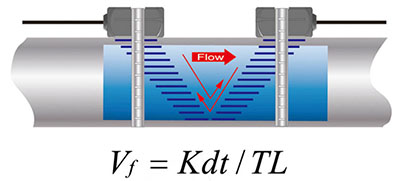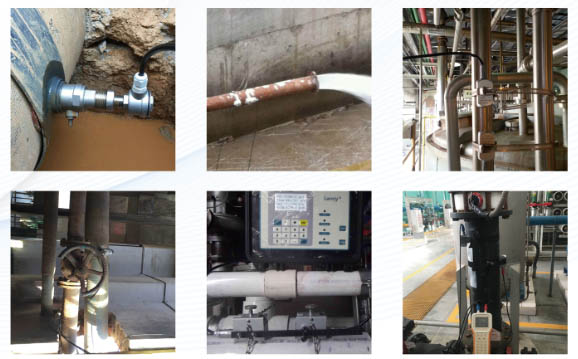A transit-time difference type ultrasonic flowmeter is measured using A pair of transducers (sensors A and B in the figure below), which alternately (or simultaneously) transmit and receive ultrasonic waves. The signal travels faster upstream than upstream in the fluid, and the time difference is zero when the fluid is still. Therefore, as long as the time of downstream and countercurrent propagation is measured, the difference value △t can be obtained. Then, according to the relationship between △ T and the velocity V, the average velocity of the medium can be measured indirectly, and the volume flow Q can be calculated according to the cross-sectional area.
V = K * △ t
Q=S×V, where K is a constant and S is the cross-sectional area inside the pipe.

The transit-time ultrasonic flowmeter is suitable for measuring relatively clean liquid in a closed full pipe, and the content of suspended particles or bubbles in the measured liquid is less than 5.0%. This type flow meter can be widely application in below liquids.
1) Tap water, circulating water, cooling water, heating water, etc.;
2) Raw water, sea water, general precipitated sewage, or secondary sewage;
3) Beverage, alcohol, beer, liquid medicine, etc.;
4) Chemical solvent, milk, yogurt, etc.;
5) gasoline, kerosene, diesel, and other oil products;
6) Power plant (nuclear, thermal, and hydraulic), heat, heating, heating;
7) Flow collection, leak detection; Flow, heat quantization management, monitoring network system;
8) Metallurgy, mining, petroleum, chemical industry;
9) Energy saving monitoring and water saving management;
10) Food and medicine;
11) Heat measurement and heat balance;
12) On-site flow meter calibration, calibration, data evaluation, etc.

Post time: Aug-20-2021

